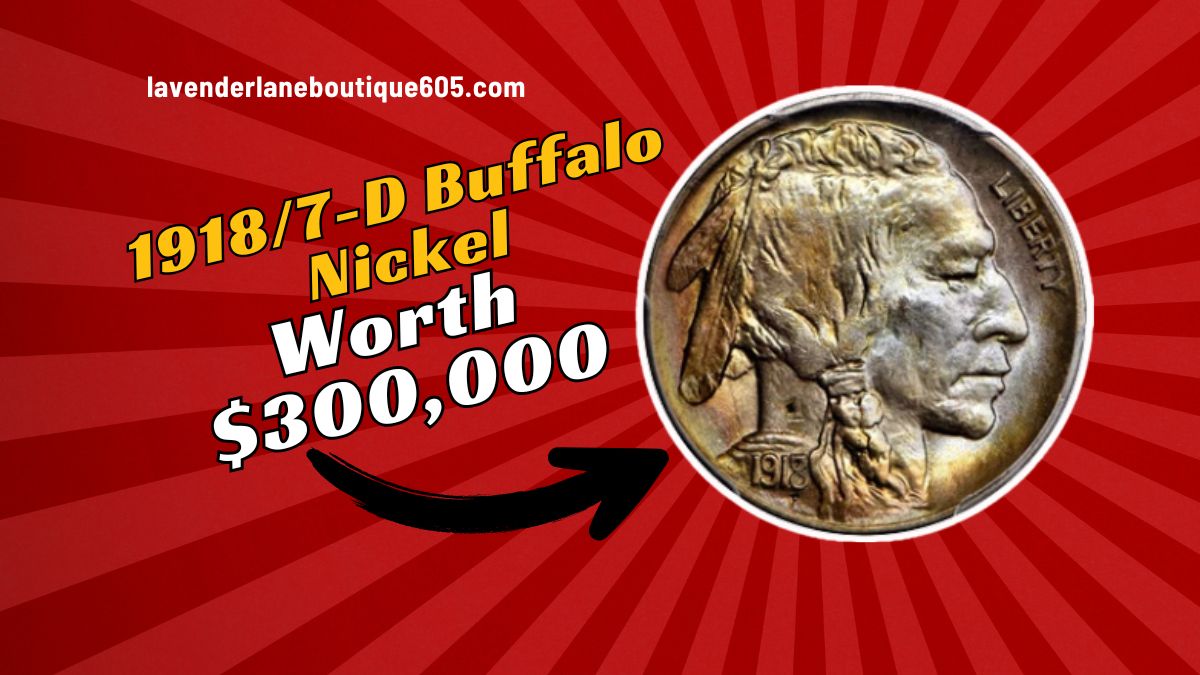Coin collectors and numismatists are always on the lookout for rare and valuable coins, and the 1918/7-D Buffalo Nickel is one of the most coveted pieces in American coinage history.
With recent auction prices reaching as high as $300,000, this overdate error coin has gained legendary status. But what makes this nickel so valuable? Let’s explore its history, rarity, and market demand.
The Origins of the 1918/7-D Buffalo Nickel
The Buffalo Nickel, also known as the Indian Head Nickel, was designed by James Earle Fraser and minted from 1913 to 1938. The obverse features a composite image of a Native American, while the reverse showcases an American bison.
However, in 1918, a minting error at the Denver Mint (D) led to the creation of the 1918/7-D overdate variety. Due to a shortage of dies, an old 1917 die was repurposed for 1918 production, and the previous date was not completely removed.
This resulted in a clear overlap of the numerals 7 and 8, making it one of the most significant overdate errors in U.S. coin history.
Why Is the 1918/7-D Buffalo Nickel So Rare?
Several factors contribute to the rarity and high value of this coin:
- Low Mintage Numbers – The Denver Mint produced only a limited number of Buffalo Nickels in 1918, and only a small fraction had the overdate error.
- Wear and Tear – Many Buffalo Nickels were heavily circulated, leading to significant wear, which makes finding high-quality specimens difficult.
- Overdate Discovery – This variety was not immediately recognized, meaning many coins were spent in everyday transactions before collectors took notice.
How Much Is the 1918/7-D Buffalo Nickel Worth?
The value of the 1918/7-D Buffalo Nickel varies depending on its condition. Below is a general price guide based on coin grading:
| Grade | Estimated Value |
|---|---|
| Good (G-4) | $3,500 – $7,500 |
| Fine (F-12) | $15,000 – $25,000 |
| Very Fine (VF-20) | $35,000 – $50,000 |
| Extremely Fine (XF-40) | $70,000 – $100,000 |
| About Uncirculated (AU-50) | $150,000 – $200,000 |
| Mint State (MS-65) | $250,000 – $300,000+ |
Notable Auction Sales
- An MS-65 example sold for $264,000 at Heritage Auctions.
- A well-preserved AU-58 example fetched $120,000 in a recent auction.
How to Identify an Authentic 1918/7-D Buffalo Nickel
Due to its high value, counterfeits and altered coins exist. Here’s what to look for when verifying authenticity:
- Overdate Marking – The ‘7’ should be visible beneath the ‘8’ in the date.
- Mintmark Placement – The ‘D’ mintmark should be located below the denomination FIVE CENTS on the reverse side.
- Certified Grading – Always buy coins certified by trusted grading services like PCGS (Professional Coin Grading Service) or NGC (Numismatic Guaranty Company).
Do You Own One?
If you suspect you have a 1918/7-D Buffalo Nickel, getting it professionally graded could reveal its true worth. Who knows? It might just be worth $300,000 or more!
The 1918/7-D Buffalo Nickel is a numismatic treasure that continues to captivate collectors worldwide. Its historical significance, rarity, and striking overdate feature make it one of the most valuable nickels ever minted. Whether you’re a seasoned collector or a beginner in coin collecting, finding one of these rare coins could be a life-changing discovery.
FAQs
What is an overdate error?
An overdate error occurs when a coin die from a previous year is repurposed and over-engraved with the current year’s date, resulting in overlapping numerals.
How can I identify a 1918/7-D Buffalo Nickel?
Look for the overlapping “7” and “8” in the date. The “7” is visible beneath the “8,” indicating the overdate error.
Why are higher-grade coins more valuable?
Coins in better condition exhibit fewer signs of wear, making them more appealing to collectors and thus more valuable.
Are there counterfeit 1918/7-D Buffalo Nickels?
Yes, due to their high value, counterfeit versions exist. Always seek authentication from reputable grading services before purchasing.

